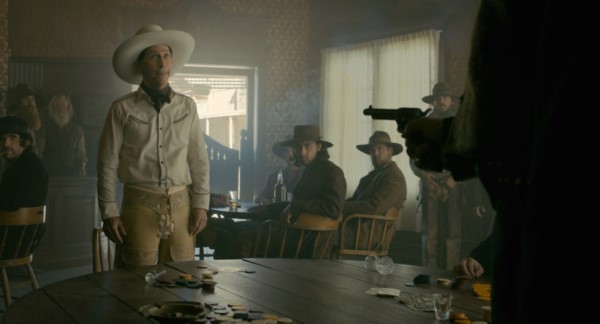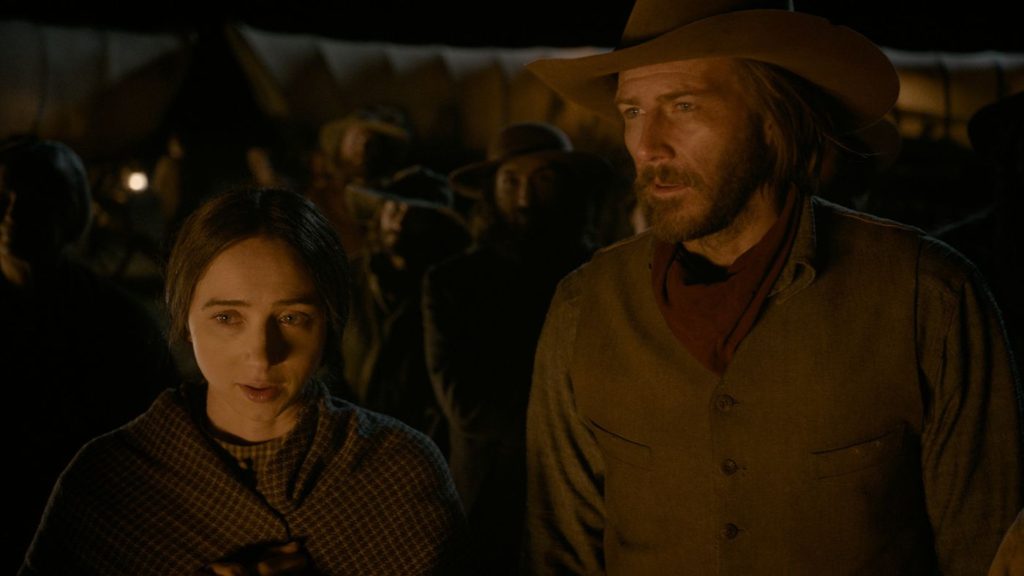The Ballad of Buster Scruggs Review

The Coen Brothers return to the West (following 2010’s “True Grit”) with “The Ballad of Buster Scruggs,” but what seems like a gleeful and glib anthology inspired by tall tales and dipped in their signature dark wit turns out to be fraught with darkness, unpredictability and arguably nihilism. Beneath the Coens’ usual clever and compelling trappings we sense two master storytellers struggling deeply with the world and how to accept it.
Uncertainty lies at the heart of the six short stories that compose “Buster Scruggs.” And they all do so differently. The Western genre is unique in that the range of tonal possibilities can vary from preposterous and comical folk tale to dark violence and gritty realism. Joel and Ethan Coen use all manner of brushstrokes in this film, but in each segment they are consistent in their approach. Each could be enjoyed on its own, but viewed together there’s a greater thematic tapestry and each story offers a new angle with which to view it.
The stories of “Buster Scruggs” all encounter notions of life and death, fate and fortune, and purpose. Violence is a hallmark of each of them, with the first one, “The Ballad of Buster Scruggs,” setting a strong – and quite curious – example with its jovial bloodshed and pristinely dressed titular cowboy (Tim Blake Nelson). Although a misleading tone-setter in being the film’s most outlandish chapter, the story does set a helpful early precedent to expect the unexpected.
Much of the stories have a cryptic element punctuated by an ambiguous resolution (or lack thereof), making the viewing experience a lot like solving a riddle without a clear answer. “Near Algodones,” stars James Franco as a dim-witted bank robber escaping judgment. “Meal Ticket,” the film’s grimmest offering, features Liam Neeson and Harry Melling (Dudley Dursley in the “Harry Potter” films) as a traveling sideshow operator and his talent in a story of survival that will stop your heart. A noteworthy performance from Tom Waits headlines the gold-digging segment “All Gold Canyon” and a rare Coen brothers romance unfolds between an Oregon Trail guide looking for a change (Billy Heck) and a young woman with nothing to her name (Zoe Kazan) in the longest story, “The Gal that Got Rattled.” The film is punctuated with a mysterious carriage ride to a daunting destination in “The Mortal Remains.”

Laughter and solemn sadness can be found in equal measure throughout this latest Coen Brothers opus. It begins with a character in Scruggs who considers himself to be of a sunny disposition toward humanity despite an apparent eagerness to deploy violence, the irony of which he attributes to not expecting too much from people. The Coens spend the rest of the film wrestling with that worldview through the lens of the lawlessness of the American frontier. In each story, a different set of cards is dealt (and literally, in the case of Scruggs) and the players respond in different ways.
In both the sum of these six parts and individually, the Coens effortlessly display their firm command of their craft, delivering a product full of their signature strengths. Although Coen fans tend to bicker about which of their films are the best or the worst, the varied and episodic nature of “Buster Scruggs” ensures that all admirers will find common ground in enjoying this film, though perhaps for different reasons (and surely different opinions about which short is best). And like so many of their films, replay value will be high on this one, which is quite convenient given that it will forever live on Netflix.




0 Comments
You can be the first one to leave a comment.